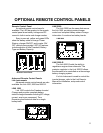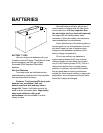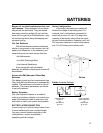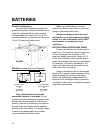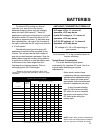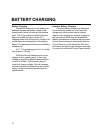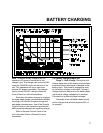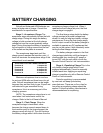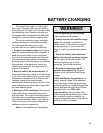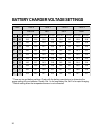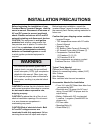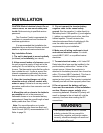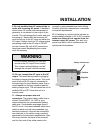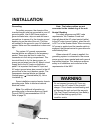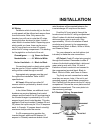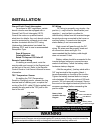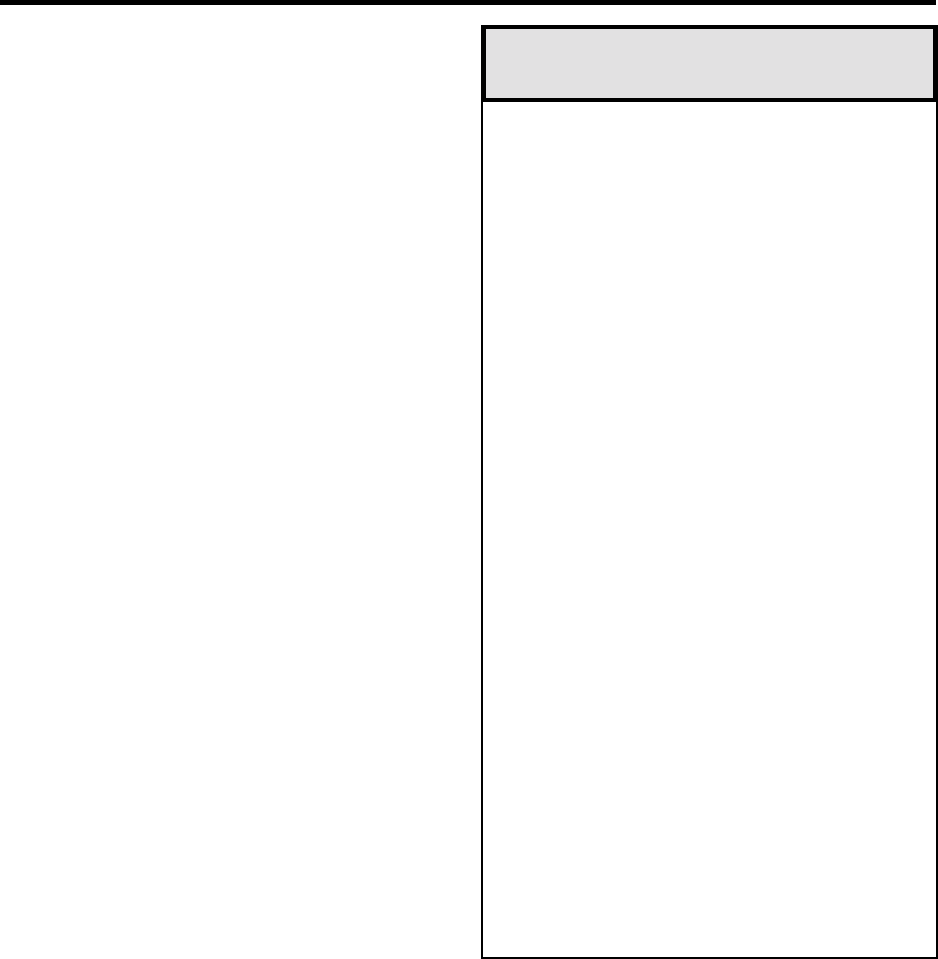
19
BATTERY CHARGING
The equalizing charge is a timed, eight-
hour cycle. The cycle can be ended early by
interrupting the AC power to the charger at any
time during the cycle. Equalizing should only
be engaged after the batteries have been fully
charged by a normal battery charging cycle.
During this equalizing stage, the battery
voltage will increase to the equalize voltage.
This will cause the battery bank to gas
profusely and will accomplish the following:
1. Removal of residual sulfate. Each time a
battery is cycled (discharged and charged), a
small amount of sulfate is left on the plates.
Over time, this gradual buildup of sulfate will
compromise the performance of the battery.
By applying an equalizing charge, the sulfate is
returned back to the electrolyte, raising the
specific gravity and fully exposing the active
material of the plates.
2. Bring all cells to the same potential. All
lead-acid batteries are made up of individual
2 volt cells. As the battery bank is cycled, slight
differences in the cells result in different cell
voltages, affecting the overall charge
effectiveness. Equalizing brings all cells to the
same voltage and the electrolyte in each cell to
the same specific gravity.
3. Mixing up of the electrolyte. Electrolyte in
battery cells tends to separate into layers of
acid and water. The vigorous bubbling action of
the battery during equalizing serves to physi-
cally mix the electrolyte. Refer to the Remote
Control Panel and Link Owner’s Manuals for
additional cautions on equalizing.
Note: Do not equalize gel cell batteries.
1. Do not equalize gel cell batteries.
Check remote default settings.
2. Always monitor the equalize charge
cycle. Provide proper ventilation for
battery fumes. Do not allow any sparks
during equalizing. If one or more cells
begin to overflow, terminate the equalize
cycle.
3. Check the battery electrolyte both
before and after the equalizing charge.
Do not expose the battery plates to air.
Leave the battery caps on while
equalizing. Top off after equalizing.
4. Remove all loads from the DC
system before equalizing. Some DC
loads may not tolerate the high charge
voltage.
5. With the Remote Control Panel the
battery state-of-charge LEDs sequence
during equalizing. When the equalization
cycle is complete, the charge automatically
goes to float and the green float LED bat-
tery status light is on. With Link
Instrumentation, the red charge LED
flashes during the equalizing cycle. When
the equalization cycle is complete, the
charger automatically goes to float and the
green float LED is illuminated.
WARNINGS



